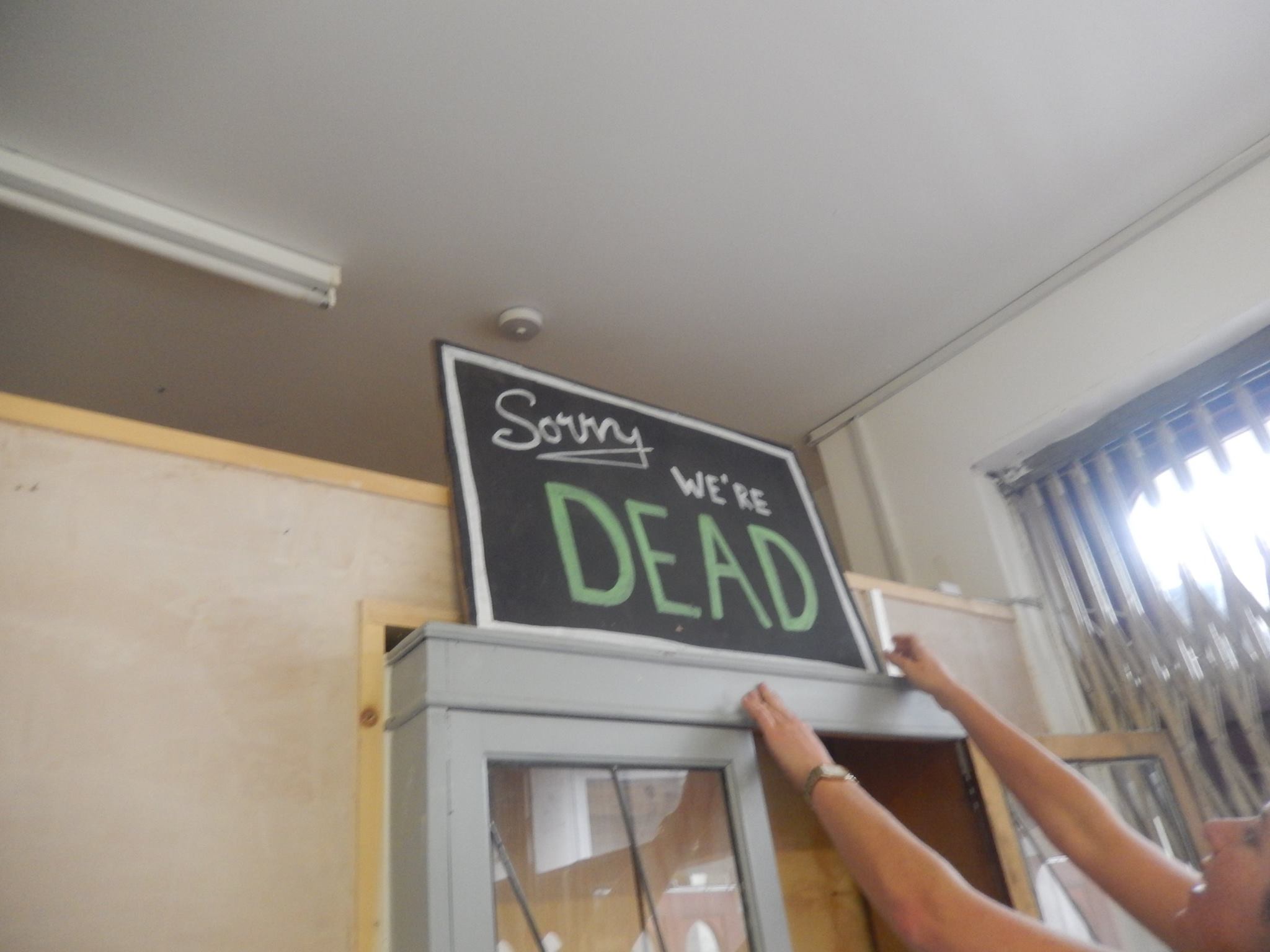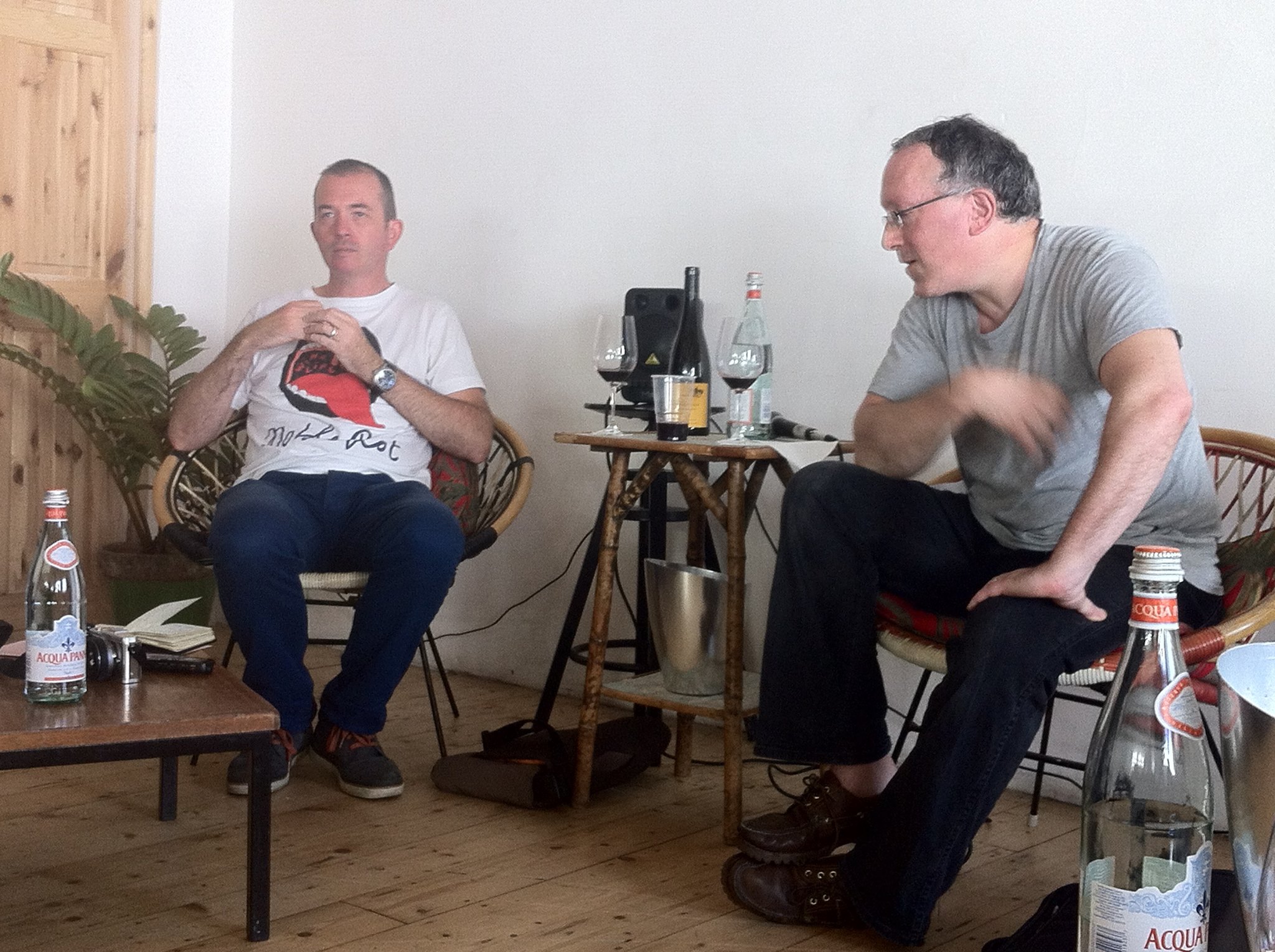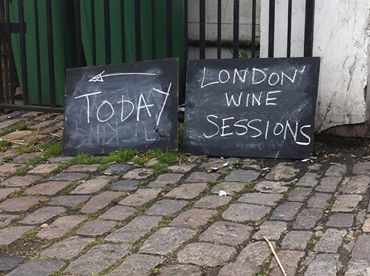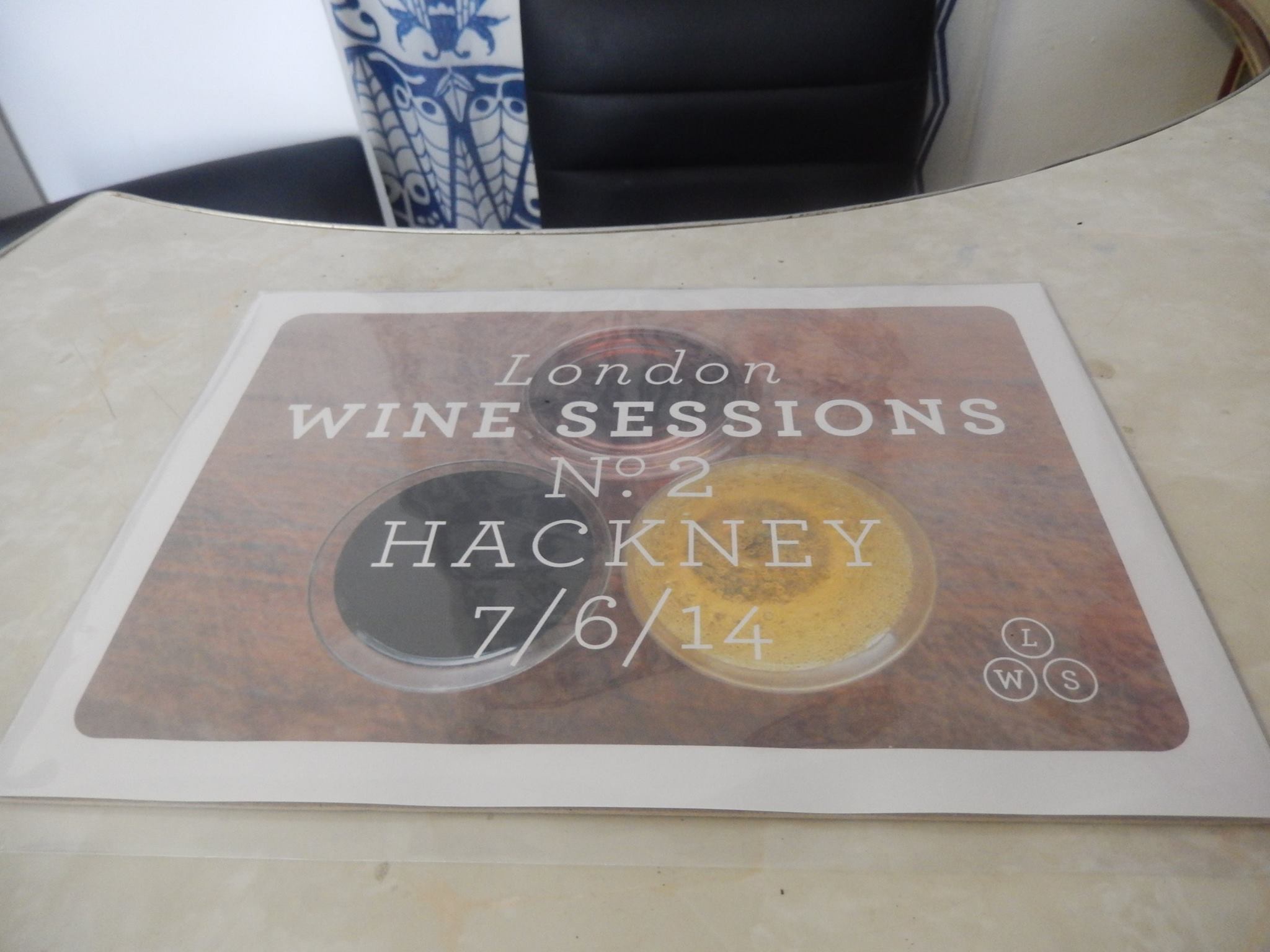Looking at the wine world from afar with a considerable lack of gravity…
A peripatetic journey around the wine world or, if you prefer, rumbling in the wine jungle, alighting where fancy leads and making the argumentative equivalents of wild ferment micro-cuvees.
This piece stems (and whole bunch) from a discussion Jamie Goode and I had during our seminar at the second edition of The London Wine Sessions. Throw into the mix some provocative wine truisms, thumbnail portraits of biodynamics and a quick skip through the thorny topics of wine assessment, flaws and faults and personal taste, and then set the whole talk against a background tasting of four highly individual wines… and you have food (or rather drink) for thought.
People take wine far too seriously and treat it like an academic subject. The need to have fixed opinions places the premium on what can be learned, for it implies that the totality of wine knowledge can be demarcated. Rather than being encouraged to cultivate an inquisitive, intuitive and personally responsive approach, we are instructed to subscribe to an unyielding “wine-iverse” of quasi-absolutes, of goods and bads and rights and wrongs. If this is not against the very spirit of wine I don’t know what is: meanwhile, the wine world, turns and turns slowly, and the liquid itself is relentlessly pored over rather than poured into (a glass) and enjoyed. As Anton von Klopper rightly says: “Wine is one of the most over-serious beverages there is”.
The current wine industry is rooted in a world of commercial certainties; it values (the perception of) inalienable wine truths, product consistency, quantifiable assessment and journalistic imprimatur. It views wine as a product effectively manufactured for a commercial purpose, whether be sold at the most basic level or traded for gain in more rarefied circles.
Scientific knowledge equips us with a framework within which we may begin to formulate our opinions about individual wines, but it does not give us defining proofs. We are able to comprehend causality in winemaking, understand why things work and see what the connections are, but there are infinitely more things in heaven and earth than can be measured in a petri dish or calibrated according to a tasting chart. If the devil is in the detail, the holy proof is in the context. In other words it is one thing, for example, to identify the existence of brettanomyces bacteria in a particular wine, it is quite another to evaluate how that affects the wine qualitatively. Brett, VA, aldehyde character, reduction, and oxidation may be out-and-out faults or they may be signifying flaws – depending on the degree, depending on the wine, depending on the taster.
The job of the vigneron is to avoid a situation where the problematic by-products of the transformational process totally subvert the expression of fruit or terroir. Yet I have witnessed a wine evolve from ugliest duckling into comeliest swan when these so-called faults (stinky compounds) have dissipated. Go figure. So, while one might argue that while there are some absolutes in wine assessment, there are many more relatives and exceptions that may or may not prove the rule. As drinkers we perhaps should examine wine holistically, deploying ethical, aesthetic, sympathetic and analytic sensibilities and formulate a response accordingly, rather than filtering the wine through a single thick gauze of received wisdom.
Flaws in wine are a kind of counterpoint; they highlight or accent the quality of the wine itself such as a strange note in a musical composition, a crack in the paint on a canvas or a dent on the surface of the apple. Flaws are the warp and the weft, the living truth of the wine, “the bottled poetry” that Robert Louis Stevenson refers to, and testament to its mutability.
This truth feels like Wabi sabi, the ancient aesthetic philosophy rooted in Zen Buddhism, particularly the tea ceremony, a ritual of purity and simplicity in which masters prized bowls that were handmade and irregularly shaped, with uneven glaze, cracks, and a perverse beauty in their deliberate imperfection.
The philosophy celebrates beauty in what’s natural, flaws and all. The antique bowls above are prized because of (not in spite of) their drips and cracks. Wabi sabi is the beauty of things imperfect, impermanent, and incomplete, the antithesis of our classical Western notion of beauty as something perfect, enduring, and monumental.” In wine, cleanliness may be next to godliness if you are an oenologist, but it may also result in antiseptic, denatured, faultily-faultless wines. Wines that have edges and abrasions, raggedy wines that possess their own remarkable inscape – to use a term coined by Gerard Manley Hopkins – seem to be more human.
Modern palates cleave to recognisability – as soon as you confront people with something that is notionally blemished, say a Sauvignon that is almost amber in colour and has no obvious fruity aromatics, or tannins in a white wine when you are expecting clean and cleaned-up juice, they are disconcerted for they have been taught to believe that these are deviations from the norm. Such templates need to be shattered.

The nub of the hub of the argument – a swift digression, naturally
At school I was taught a very classic colonial interpretation of history. It was the authorised version of battles and dates and kings and queens. This approach has largely changed and now we expected to interrogate the evidence and look at it from alternative points of view. The world of wine is still fairly trammelled; the WSET inculcates a textbook mentality towards wine, whilst oenology schools focus on chemical interventions in winemaking as if the truth of wine might be narrowed to a simple correct chemical formula and yet… and yet.. There are more things in heaven and earth than are dreamt of in a scientifically absolute conservative syllabus. When it comes to wine I do not taste right or wrong, true or false, but interpret the flavours in my own way – as do millions of other drinkers. Nor am I wedded to some fuzzy notion of natural wine, although my palate is conditioned to prefer pure or exciting or unusual or intensely drinkable wines. My first port of call isn’t invariably Grand Funk Central and I don’t get the shakes if deprived of my regular infusion of oxidised (oxidative, fool!) wines, but I like my wine to taste like wine, not of jam, or planks, or toast or sulphur or jif lemon juice or a milquetoast lab concoction, and I am prepared to take a little funk in my stride. I would also rather taste the flavour of the terroir than the signature tropes of the winemaker. My palate has changed over time, and, thus my aesthetic for judging has also changed. I am not prescriptive and recognise that wine will always be made differently and fulfil different purposes. Recently, I overheard an experienced taster dismiss a Txacoli as too thin. Too thin for a bloody steak? Or an intensely smoky anchovy? A mixture of the anachronistic points systems and lofty pronouncements have created a fake gold standard of critical judgement. This sense of a conservative hierarchy disenfranchises individual artisan growers and their wines which, in turn, (inevitably, perhaps) creates its own counter-culture.
Winemaking is viewed variously as a creative art, a craft, a science, an interpretation, an accompaniment, a safety net, a correction. It is either about pushing the envelope and exploring new methods or the avoidance of risk, it is either geared to reflect something or to make something with a particular benchmark in mind, it is the expression of the vineyard, nature with a little nurture, or heavily denatured and heavily nurtured, it is the expression of the sense of the vineyard, it is the expression of the will of the winemaker. It does not just reflect opposite ideas and approaches, but varying degrees of intervention.
And to be a natural winemaker you must be alive to your wine at all times. You have many choices, you must taste constantly, and you must understand, anticipate and feel the wine. You don’t make the wine (but you can unmake the wine), you nurture it along its journey just like the farming process nurtures the grapes to fruition. In certain vintages when the sun shines metaphorically, and in reality, nature may be bountiful, in others one must graft and take appropriate physical action. So it is with winemaking. Which is why real wines are never the same from vintage to vintage or barrel to barrel for they reflect and capture the unique and changing challenges that the natural vigneron must confront.
There are as many opinions as there are wines. Whilst it is true that the more you taste the more experience you acquire, at the same time prejudices may become so entrenched that no amount of exposure to different opinions will shake inviolable conviction. We should concentrate on the wines and the vines and the people themselves, and here we are in the real world where something is actually made rather than written about. Here is where winemaking graft and craft takes precedence over critical divination, where one must needs taste in the round, understanding the story and intention, the whole journey rather than the product qua product in the bottle. Wine is no mere microbiological construct made to be deciphered; it has a hinterland.
Tastes change as we ourselves change and as circumstances change. Responses to wine are as much to do with hormones, your given mood, your sense of well-being, the weather, the company, the occasion. The same wine will always taste different. Some would claim that the biodynamic calendar influences the way that the wines taste, but despite that the wine may be living, mutating, in its shell or in its pomp, the greatest variable in the tasting is the human one. Every wine deserves to be tasted in a favourable context, whether at the appropriate temperature or in the right shape of glass. And, of course, in the right company. Nothing makes sour grapes like negative energy.

In praise of… enjoying wine – another digression
What is wine to you? Is it the Masnavi of Hafiz or the Rubaiyat of Omar Khayyam or a Bacchanalian frenzy or an altogether more intellectual affair? Does it bring you together or set you apart? Nowadays, wine seems to provoke ardent philosophical extremism. I thought it was about grapes, but as often as not it is about sour grapes. As soldiers cling with white knuckles to their battle standards so do writers, critics and drinkers firmly hold on to their contentious opinions, reasoning not the need and needing not the reasons, although one will sometimes encounter beacons of reasonableness and engaging humility. Outside the coterie of wine commentators talking unto wine commentators (and I’m as guilty here as anyone) there is a real world where people don’t always have preconceived ideas and display a willingness to treat each wine on its own merits.
In the wine industry (for it is thus) all is not gas and gaiters. Buying and selling is often reduced to an adversarial game where one opponent values net price over origin and quality, where the wine is no more than a bargaining chip to lever business; where people worship the tedious demi-gods of gross profit; where any atom of joy and generosity shrivels in the boiling transaction between the hard seller and a desiccated calculating machine.
The flipside is where wine is appreciated as an artisan product, where deliciousness is prized, where drinking good wine is the catalyst to bright conversation, the seasoning for food, the foundation for camaraderie and the instigator of pleasure, loosening inhibitions and kindling the imagination. There is indeed truth in wine, but you never see it listed in the ingredients on the label.
The final word should go to Christopher Hitchens, a man of many words and almost as much liquor. He bring together the Dionysian, aesthetic and humanistic reasons for drinking.
“Alcohol makes other people less tedious, and food less bland, and can help provide what the Greeks called entheos, or the slight buzz of inspiration when reading or writing. The only worthwhile miracle in the New Testament—the transmutation of water into wine during the wedding at Cana—is a tribute to the persistence of Hellenism in an otherwise austere Judaea. The same applies to the seder at Passover, which is obviously modelled on the Platonic symposium: questions are asked (especially of the young) while wine is circulated. No better form of sodality has ever been devised: at Oxford one was positively expected to take wine during tutorials. The tongue must be untied. It’s not a coincidence that Omar Khayyam, rebuking and ridiculing the stone-faced Iranian mullahs of his time, pointed to the value of the grape as a mockery of their joyless and sterile regime. Visiting today’s Iran, I was delighted to find that citizens made a point of defying the clerical ban on booze, keeping it in their homes for visitors even if they didn’t particularly take to it themselves, and bootlegging it with great brio and ingenuity. These small revolutions affirm the human.”
–Christopher Hitchens, Hitch-22: A Memoir

Certain wines seem to possess a kind of intrinsic beauty. Beauty stimulates all your senses, vibrates the cord that connects the head to the heart. Beauty causes poetic palpitations as you reach deeply into the reservoir of language to signify your appreciation. The wine’s colour, the way the it holds the light kindles expectation, but we are generally more captivated by aromas – less of the grape itself, but suggestive of pulsing movement, bristling minerals, cool breezes, baking earth, coursing water, and then the palate, where the wine shapes your mouth around it as if to make you part of its very texture.
Here were aromas that flung open the doors of perception. Aromas that bathed the senses, conjured places, brought forth seasons, specific times and personal associations. Vinous smells may be strong and rooted in the earth, or ethereal and transient. And although the wine may be mere processed grape juice, its alcoholic vapours seem impregnated with memories of the vintage and to carry charged particles of information to different areas of the brain. Sometimes I smelled colours or fruits or earth or herbs and spice, sometimes less tangible elements that took my mind on a curious associative journey. When the mood takes, wine may activate a personal synaesthesia, liberating the senses, unifying colours and smells with emotions.
Simplicity in wine can be a virtue. Less is more. Exalting the quality of the grape may be done with winemaking bells and whistles or it may be achieved sans fanfarade. Wood, for example, is not a flavouring agent, the cream on top, but a component that should blend into the shape of the wine. A balanced wine allows the sum to be greater than the parts. Complexity is often viewed as something that be introduced with oenological intervention – the wine is consequently moulded to a style, it becomes the “complete” product. A complex wine can indeed be simple – it will have clarity and originality and will not be afraid to be naked.
The best bottle is the empty bottle. The ultimate purpose of a bottle of wine is to be drunk and enjoyed.
There has never been a better time to be a wine drinker than now in London. This is a generational and systemic change, part and parcel of the new artisan culture around food and wine. Recently, people have begun to enter wine trade with an amateur ethos, a refreshing sense of curiosity and true passion for the subject. They have no debts to pay to the industry and they enjoy representing points of difference rather than flowing within the mainstream. If they run wine bars and restaurants they seek to instil a relaxed wine culture, wherein wine is free of pretence and is delicious, affordable and distinctive. As a customer you are not held hostage to your likes and dislikes but enjoined to try new and different things. The small independent retailers that seem to be opening almost daily are also attracting a burgeoning young audience, because they recognise a fundamental truth – that wine is to be demythologised first and then shared (so you have to tell people about it, taste it with them and create events around it). And whether it is the London Wine Sessions, or car boot sales, or pop-up wine bars or the larger all-encompassing wine fairs such as Real Wine and Raw, the London wine scene is rocking and rolling with creative energy.
And that’s what the wine world needs more of. Creativity. Generosity. Rule-bending-and-breaking. Different environments to experience wine. Open-mindedness.
“Free will is the cutting edge of Creation, don’t you see? Spontaneity is the impulse, the purest expression of freedom, and the impulse wants to do whatever it wants to do. But you are afraid of what others think, others who are just as afraid of what you think, and so you pussyfoot along the perimeter of the free-will zone, wilting like a wallflower.” Tony Vigorito

Think what you what to think. Drink what you want to drink. But allow yourself to venture into realms of taste that challenge your preconceptions and your palate. The wine world is a big place… and it’s getting bigger all the time. And that’s something worth embracing.
P.S. For a swift take on the wines tasted at The London Wine Sessions please read Jamie Goode’s post HERE


